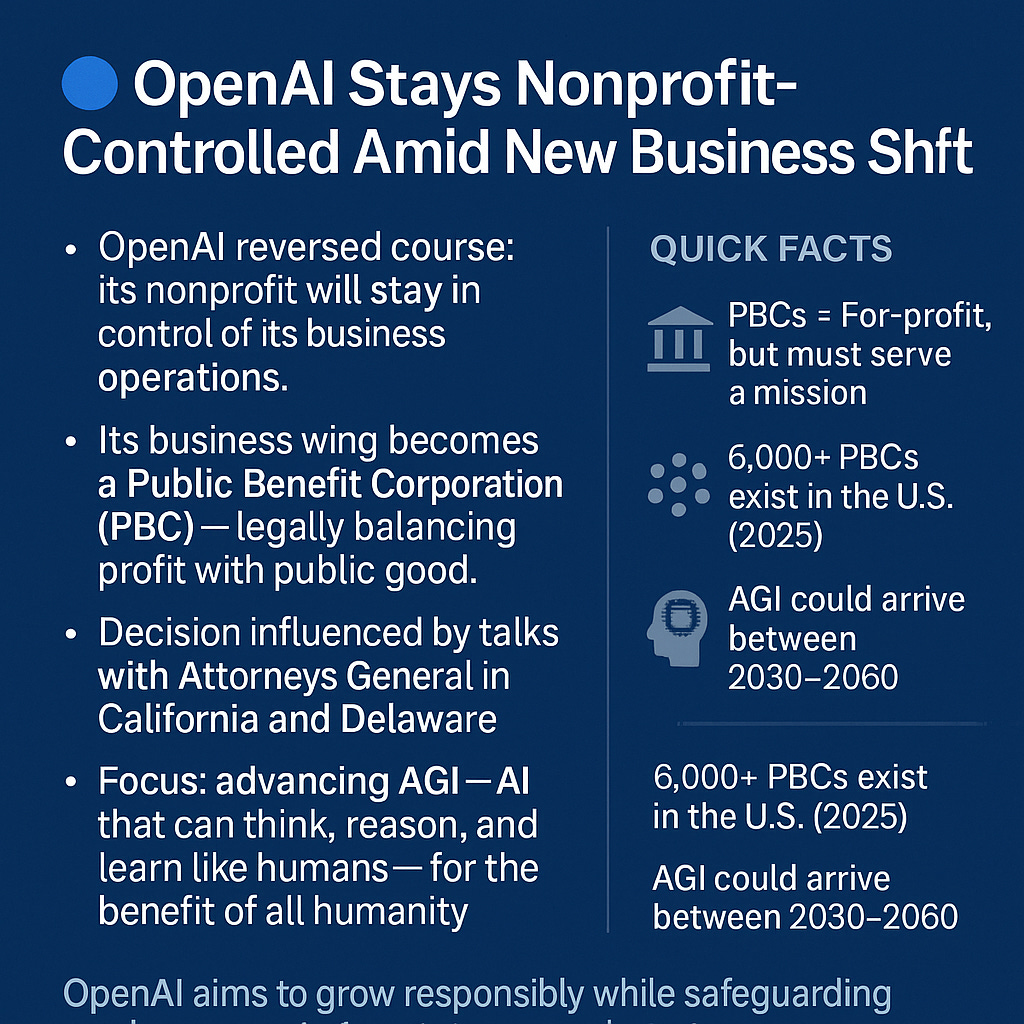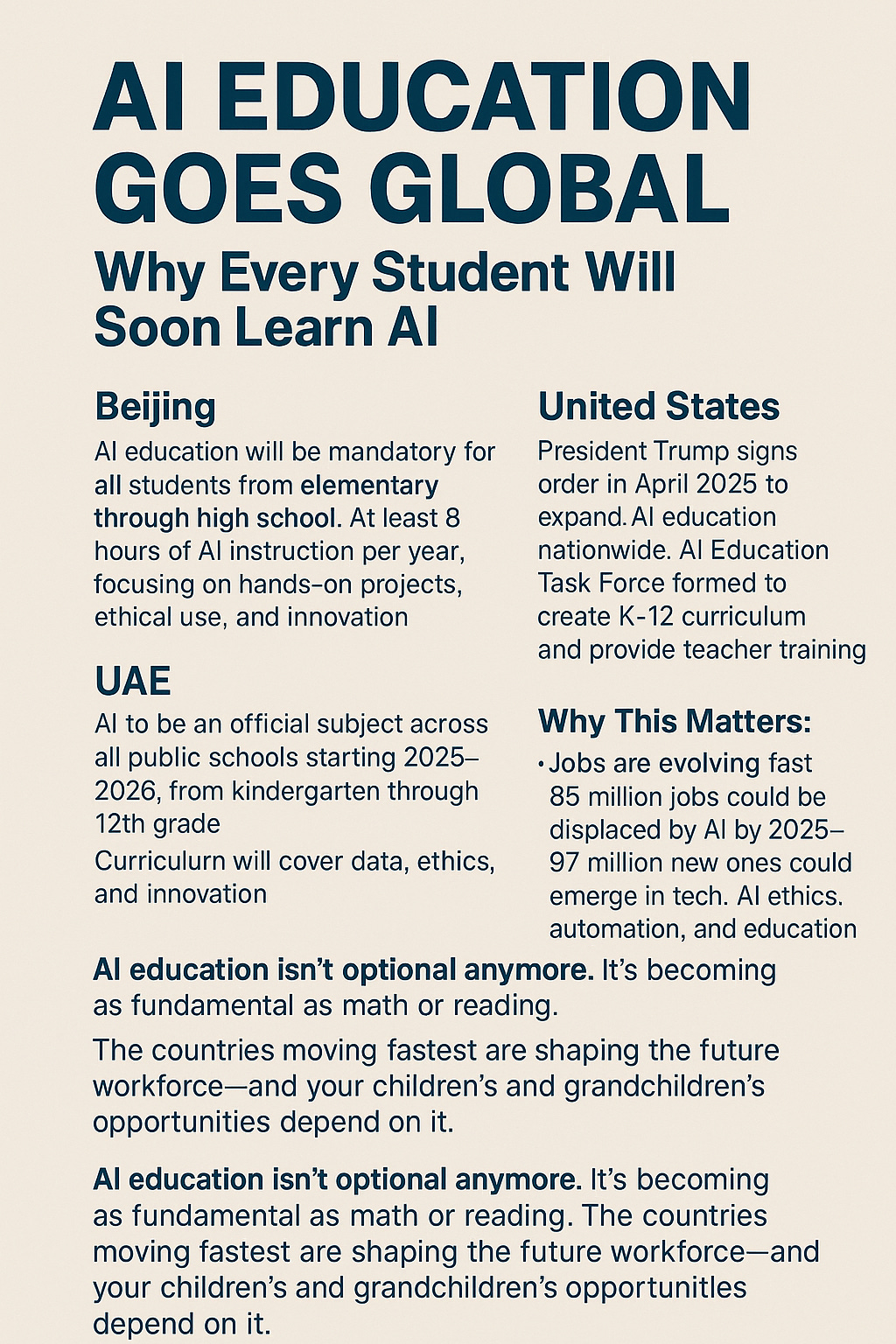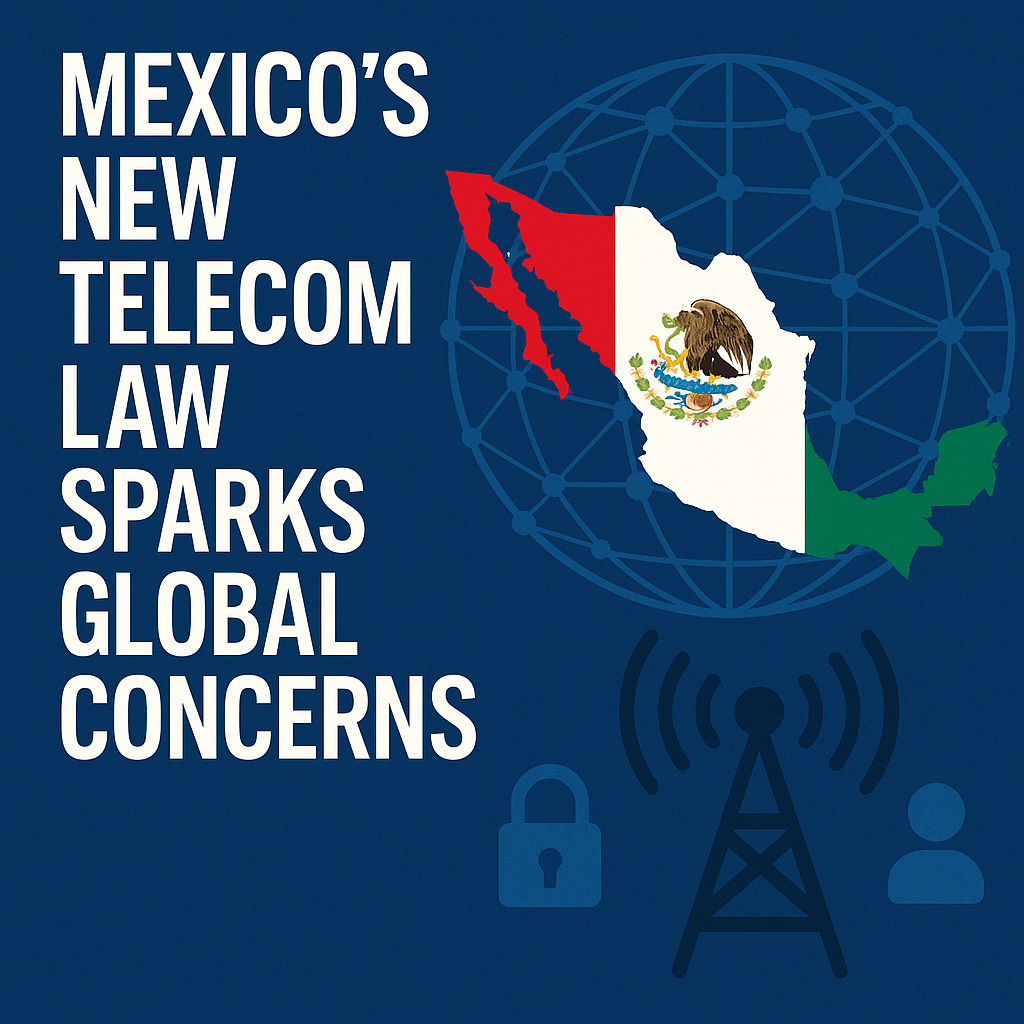- Yaro on AI and Tech Trends
- Posts
- ✅OpenAI Reaffirms Nonprofit Control Amid Restructuring.
✅OpenAI Reaffirms Nonprofit Control Amid Restructuring.
AI Education Goes Global.
Get in Front of 50k Tech Leaders: Grow With Us
Hope you had a great weekend and are feeling refreshed to learn more and leverage the latest tech to boost your productivity. AI is going global, and it’s not just college graduates and workers who need to stay alert — parents must also take action to prepare the next generation for the future. Mexico is introducing new digital laws that could expand government control over citizens, and OpenAI will remain a nonprofit, but with a few structural changes. Let’s dive in.
OpenAI Reaffirms Nonprofit Control Amid Restructuring.
🧰 AI Tools
AI Education Goes Global.
🧠 Learning Corner - Google AI
What You Need to Know About Mexico's New Controversial Telecom Law
📰 News and Trends.
OpenAI Reaffirms Nonprofit Control Amid Restructuring.

OpenAI announced it will keep its nonprofit division in control of its business operations, reversing earlier plans to fully convert into a for-profit structure. Its business arm will transition into a Public Benefit Corporation (PBC), with the nonprofit retaining oversight and significant ownership.
Founded as a nonprofit in 2015, OpenAI shifted to a "capped-profit" model in 2019, allowing investors limited returns. The recent decision comes after discussions with civic leaders and the Attorneys General of Delaware and California.
Why it matters:
Maintaining nonprofit control ensures OpenAI stays aligned with its original mission — to develop AGI (Artificial General Intelligence) that benefits all humanity, rather than solely focusing on maximizing profits. With AI advancing rapidly, this move could influence global standards for ethical AI governance.
Turn AI into Your Income Engine
Ready to transform artificial intelligence from a buzzword into your personal revenue generator
HubSpot’s groundbreaking guide "200+ AI-Powered Income Ideas" is your gateway to financial innovation in the digital age.
Inside you'll discover:
A curated collection of 200+ profitable opportunities spanning content creation, e-commerce, gaming, and emerging digital markets—each vetted for real-world potential
Step-by-step implementation guides designed for beginners, making AI accessible regardless of your technical background
Cutting-edge strategies aligned with current market trends, ensuring your ventures stay ahead of the curve
Download your guide today and unlock a future where artificial intelligence powers your success. Your next income stream is waiting.
🧠 Learning Corner.
Google AI Education: Offers a variety of free resources to learn about AI and machine learning
AI Education Goes Global.
Why Every Student Will Soon Learn AI.

Artificial Intelligence is no longer just for tech labs and startups—it’s becoming part of everyday education worldwide.
Beijing just announced that starting this fall, AI education will be mandatory for all students from elementary through high school. Every school must provide at least 8 hours of AI instruction per year, focusing on hands-on projects, ethical use, and AI innovation. This "teacher-student-machine" model aims to prepare over 2 million students in Beijing alone for an AI-driven future.
Meanwhile, the UAE will introduce AI as an official subject across all public schools starting in 2025–2026, from kindergarten through 12th grade. Their curriculum, covering seven key areas including data, ethics, and innovation, is designed to build a future-ready workforce and support the UAE’s ambition to be a top global AI hub.
In the United States, President Trump signed an executive order this April to expand AI education nationwide. A newly formed AI Education Task Force has 90 days to design a full action plan, which includes teacher training, K-12 curriculum updates, and AI literacy challenges. Federal grants will soon prioritize AI education, with public-private partnerships rolling out new resources to schools within 6 months.
Jobs are evolving fast. According to the World Economic Forum, 85 million jobs could be displaced by AI by 2025—but 97 million new ones could emerge in tech, AI ethics, automation, and education.
AI literacy will be basic literacy. Students learning AI today will be tomorrow’s engineers, healthcare innovators, digital policymakers, and ethical leaders.
Nations investing in AI education now will lead tomorrow’s economy. China, UAE, and the U.S. are betting early—others will follow or fall behind.
AI education isn’t optional anymore. It's becoming as fundamental as math or reading. The countries moving fastest are shaping the future workforce. Mastering fluidity and learning how to learn while becoming a perennial learner, as well as concentrating on the 4Cs (Critical thinking, Communication, Collaboration, and Creativity), are key to an always-changing future.
📰 AI News and Trends
Google is reportedly showing ads in chats with some third-party AI chatbots.
Apple and Anthropic reportedly partner to build an AI coding platform.
Perplexity AI is set to launch its Comet browser in mid-May, aiming to compete directly with Chrome by integrating AI and research features into browsing.
China Using DeepSeek's AI Model To Develop Advanced Warplanes.
Alibaba unveils Qwen3, a family of ‘hybrid’ AI reasoning models
🌐 Other Tech news
Apple is planning major iPhone upgrades, including an ultra-thin phone and one with an edge-to-edge display.
MoneyGram will allow crypto companies to make use of its thousands of physical locations worldwide to provide cash deposits and withdrawals for their users.
Skype shuts down today, marking the end for an iconic internet service that was ultimately overtaken by mobile apps and chat software.
Residents of a small south Texas town that's home to SpaceX have voted to incorporate into a new city, Starbase.
Pinterest has suspended users en masse for content violations… but those violations may not actually exist.
What You Need to Know About Mexico's New Controversial Telecom Law

Mexico's recent proposed Telecommunications and Broadcasting Law has ignited intense debate, raising alarms over potential threats to digital freedom and human rights. Introduced by President Claudia Sheinbaum, the bill aims to replace the current legal framework, aligning the country with Industry 4.0, 5G, and IoT advancements. However, its fast-tracked legislative process and ambiguous provisions have drawn sharp criticism from civil society, experts, and opposition groups. Here's a breakdown of the key issues and why they matter.
What's Changing?
The law eliminates the autonomous Federal Telecommunications Institute (IFT), transferring its powers to the newly created Agency for Digital Transformation and Telecommunications (ATDT), a government-controlled entity. This shift centralizes authority, giving the Executive Branch significant control over spectrum allocation, concessions, and content oversight. The ATDT could block digital platforms without judicial oversight, a move critics warn could enable censorship. Additionally, the law mandates a "Communications and Equipment Registry" requiring telecom providers to collect detailed user data, raising privacy concerns.
Why the Backlash?
Civil society organizations, including Article 19 and R3D, argue the law's vague wording legalizes mass surveillance and prior censorship, violating constitutional and international human rights standards. The absence of clear criteria for blocking platforms could allow arbitrary shutdowns of social media or messaging apps, stifling free expression. The law also fails to ensure culturally and linguistically relevant communication for Indigenous communities, ignoring their hard-won rights and excluding them from decision-making on spectrum use in their territories. Critics highlight the lack of transparency in the legislative process, with the bill initially rushed through closed-door sessions, bypassing open parliamentary debate.
Key concerns:
Mass surveillance: Telecom companies would have to collect and store detailed user data.
Censorship risks: ATDT could block digital platforms arbitrarily.
Indigenous rights: No protections for culturally appropriate communication were included.
Transparency: The law was fast-tracked with little public debate.
Why it matters:
Mexico, with 130 million people and Latin America’s second-largest internet market, could set a dangerous precedent. If government-led digital control expands unchecked, it threatens free expression and privacy not just in Mexico, but could inspire similar models in other democracies worldwide — especially as the global digital economy, IoT, and AI governance tighten.
Bottom Line:
As the world moves deeper into Industry 4.0 and 5G expansion, the way Mexico handles digital rights now could shape the future of internet freedom globally.
🧰 AI Tools
NoteGPT AI Visual Generator - Converts text notes into structured visuals like mind maps and diagrams. For visual thinkers and professionals needing to organize complex ideas.
Piktochart AI - Transforms text into infographics swiftly. For marketers and educators aiming to present data visually.
Text2Infographic - Generates infographics from textual content. For bloggers and content creators looking to enhance articles with visuals.
Canva Magic Studio - Includes 'Magic Design' and 'Magic Media' to convert text into visuals. This is for users seeking an all-in-one design platform with AI capabilities.
Lore Machine - Transforms stories or scripts into visual narratives, including images and animations. For authors and storytellers aiming to visualize their narratives.
Download our list of 1000+ Tools for free.

Reply